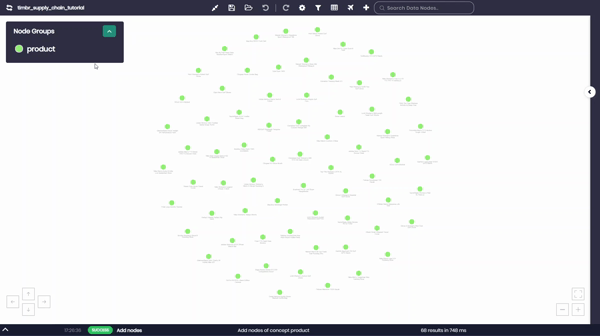Use Case
Streamline Telecom Data Management for Faster Insights
Telecommunication systems generate large volumes of interconnected data, primarily stored in relational format. Traditional graph solutions require costly, time-consuming data transformations, and often suffer from scalability limitations and high operating costs. Legacy systems further struggle to deliver real-time insights and actionable analytics.
Timbr empowers telecom data teams to unify, visualize, and analyze system data directly from relational sources. By leveraging semantic modeling, Timbr enables a 360-degree view of telecom operational data, relationships and metadata to deliver superior analytics for timely decision making.
USE CASE TEMPLATE
Timbr Github repository contains a collection of SQL ontology-based semantic data models. These ontologies serve as customizable templates, designed to help users jump-start their modeling process tailored to their specific business domains.
USE CASE ONTOLOGY MODEL
The ontology semantic model makes it easy to understand and find data across tables and datasets. Timbr speeds up data discoverability by displaying data as a network and in a business-friendly manner.
Challenges
Struggling to Integrate and Analyze Diverse Data Sources?
Telecom systems rely on multiple data sources, often stored in relational databases, leading to fragmented insights and inefficiencies. Integrating and analyzing this data to make informed decisions is a significant challenge for operators managing large, dynamic networks.
Frustrated from Relational to Graph Transformation of Telecom Data?
Traditional graph solutions require transforming relational data into graph formats, which is resource-intensive, costly, and time-consuming. Additionally, graph databases often lack scalability, becoming inefficient and expensive to operate as data volumes grow, limiting their viability for large-scale telecom systems.
Untimely Decision-Making in Telecom Systems?
Legacy systems and traditional approaches to data processing are slow and rigid, making it difficult to extract actionable insights in real time. The high operational costs and scalability challenges of graph databases further exacerbate delays, reducing responsiveness to critical events and impacting service quality.
Why Timbr
Meaningful Data Integration Without Transformation
Timbr’s ontology-based semantic layer directly integrates relational data sources without requiring transformations into graph formats. This eliminates the cost and complexity of traditional graph solutions while unifying data into a holistic, accessible framework.
Scalable and Cost-Effective Operations
Timbr’s semantic layer is designed to scale with growing telecom datasets without the performance and cost limitations of graph databases. This ensures operators can manage expanding data volumes efficiently while maintaining seamless operations.
Real-Time Insights Through Virtualization
Timbr’s data virtualization capabilities provide telecom operators with real-time access to system data, enabling instant analysis and decision-making. By eliminating data movement and leveraging existing infrastructure, Timbr significantly reduces operational costs while ensuring fast, actionable insights.
Impact
Enhanced Operational Efficiency
By unifying data directly from relational sources, Timbr reduces redundant processes and simplifies workflows. Operators achieve seamless integration and better data management, enabling them to deliver faster, more effective solutions.
Lower Costs and Improved Scalability
Timbr eliminates the need for costly graph database transformations and avoids the high operating costs typically associated with scaling graph solutions. This enables telecom operators to handle growing data volumes efficiently while minimizing expenses.
Improved Network Visibility and Responsiveness
With real-time insights and a 360-degree view of operations, Timbr empowers telecom operators to proactively address issues, optimize performance, and deliver enhanced services to customers, ensuring a competitive edge and long-term resilience.


